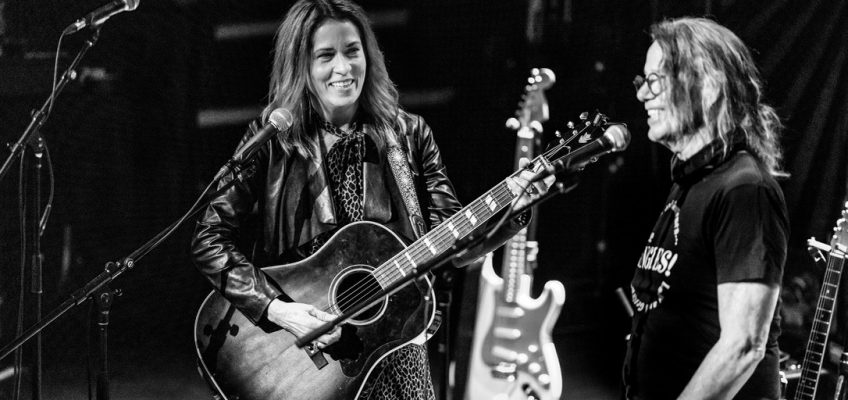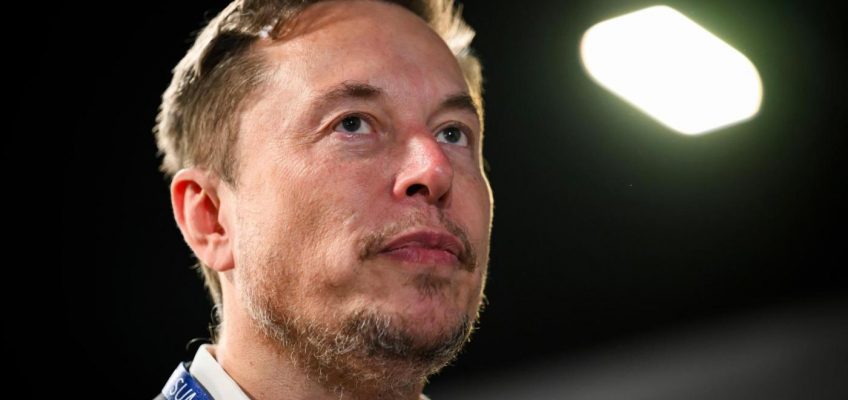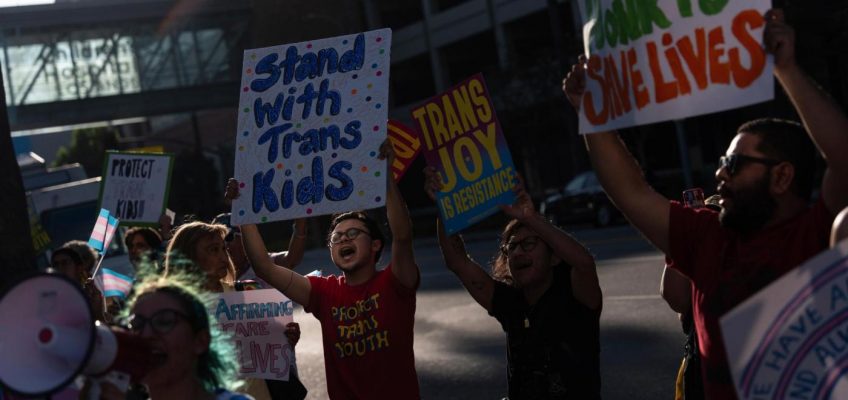ANAHEIM, Calif. — When Vicki Peterson and John Cowsill married in 2003, you might be forgiven for thinking that a song, an album or a show might follow.
After all, Peterson cofounded the Bangles in 1981 with her sister Debbi Peterson, Susanna Hoffs, and bass player Annette Zilinskas (who would be replaced by Michael Steele). And from the mid-’60s, Cowsill was a member of the Cowsills with siblings Bill, Bob, Barry, and Susan Cowsill, as well as their mother Barbara Cowsill.
That’s a lot of musical legacy between them, but no, there was nothing more than the occasional backing vocals for friends or fellow musicians over the years, until April when the first-ever Vicki Peterson and John Cowsill album, “Long After the Fire,” arrived.
Maybe that’s how it was meant to be, though. The album is a collection of covers of songs written by Bill Cowsill, who died at 58 in 2006, after a long run of poor health, and Barry Cowsill, who died at 50 in 2005 when Hurricane Katrina tore through his then-hometown of New Orleans.
“The idea was floating around for years and years,” Peterson says on a recent phone call with Cowsill. ” And some of the songs have been in our world for decades, including the song ‘Don’t Look Back,’ which was recorded by the Cowsills back in 1970. So as a kid and a Cowsills fan, I knew that song and loved it.
“It was an idea John and I talked about for a long time, and then finally, circumstances kind of came to the point where we were able to start recording together,” she says. “We have a studio here in our home, but John was touring with the Beach Boys for 23 years, and was rarely actually physically home. So it took a while to actually get into the studio and make the commitment to, like, we’re going to do this.”
Recording together isn’t the only thing Cowsill, 68, and Peterson, 67, have learned. With only one or two exceptions, they’d never shared a live stage either.
“It’s brand new,” Cowsill says, as both laugh. “We were just a domestic couple for, like, the longest time of our relationship. I mean, other than playing 20 years at Bill’s benefit, singing ‘A Thousand Times’ [which is now on their album] of all songs, we never really did anything together. Unless occasionally somebody would send us a file and ask us to put vocals on it, and we’d go downstairs in the studio and put vocals on other people’s stuff.
“Then we’d come upstairs and make dinner and that was it,” he says.
“We’re a baby band,” Peterson says. “We’re the oldest baby band in the world.”
“Because nobody knows who we are really,” Cowsill adds. “That’s why, like, Vicki wanted to call it the Peter-Sills – “
“No, I didn’t,” she says in mock offense as both laugh again.
“OK, but she wanted to name us something else than our names,” says Cowsill, who earlier this year toured with the Smithereens in place of the late singer Pat DiNizio. “I said, ‘No way, we need all the help we can get. Somebody might recognize those names and answer the phone when we call.’”
In an interview edited for length and clarity, Peterson and Cowsill talked about how they picked the songs from Bill and Barry Cowsill’s individual catalogs, what it was like taking on songs for loved family members who no longer alive, and why Peterson says Cowsill was inconsiderate on the day they first met some 47 years ago now.
Q: My understanding, John, is that ‘”Is Anybody Here” was the song that got the ball rolling when Paul Allen [who produced the record] called you from Nashville one day.
Cowsill: That’s right, yep. He was in Nashville and I was playing with the Beach Boys in Memphis and he called me up and asked me randomly: Do I want to record at Sun Studio? And I kind of laughed and said, ‘Why?’ He said, ‘Because you’ve been telling me about the Dead Brothers Project forever,’ and I kind of said, ‘Oh yeah sure.’
So we went there, it was a perfect choice. [“Is Anybody Here”] is a very Roy Orbison-y kind of melody and feel to it. It just was a beautiful place to record that song. It came out nice. So that started the project for sure.
Q: I’d heard that you and Vicki were calling this the Dead Brothers Project as you worked on it.
Cowsill: Yeah, we called it that forever. We were gonna even name it that, but then went on the internet and everybody has a ‘dead brothers’ something. To me, it was like that was risqué, but it wasn’t at all.
Q: Didn’t Bill used to do something where he’d only play songs by dead rock stars?
Cowsill: He said, ‘We only do dead guy music.’ So he would totally appreciate the Dead Brothers Project. My family’s pretty fun and dark like that.
Q: You chose six songs by each of Bill and Barry. Was it difficult to decide which ones to do?
Peterson: I would say it was easy, but there were definitely choices that had to be made. These were just the ones that rose to the top for us. We love the songs that Bill recorded with his bands Blues Shadows and Blue Northern, but some of those songs on those albums Bill did not write, so they weren’t eligible.
And Barry just has a very eclectic songbook, and some of the stuff is quite out there and quite particular to his artistry. We had to really think about that, like that’s so Barry, how can we put ourselves into that song and perform it and find a way that would feel comfortable doing that? Because he was such a character in so many ways. The guy was like a vaudeville character or something.
Cowsill: He didn’t do a lot of cowriting. He wrote for himself. Bill always loved writing with other people. Him and Jeffrey Hatcher wrote a lot of songs on the Blue Shadows, and Jeffrey is an incredible songwriter. Those guys tell stories even if it didn’t happen to them. They can get outside themselves. But Barry is very personal. He lives by example.
Q: What was a song of Barry’s you did that you had to really think about including?
Peterson: I would say “Ol’ Timeless.’ It’s just his voice and sort of a harmonium sound, and so, so personal that it felt a little ballsy in a way to take a stab at it. We wanted to honor the almost spiritual quality of that song, but then frame it very differently musically. That one was like, we’re taking kind of a giant step here.
Cowsill: And it pertains to people on the outside. Like, we couldn’t do a song like “My Car Don’t Lock.” It’s so Barry. I mean, you could do any of them, but it’s still very stylized. I wouldn’t want to mess with it.
Q: Bill and Barry have been gone for about 20 years now. I’d imagine that working on this record stirred some strong memories of them for you both.
Peterson: I knew them mostly as a fan. But I did spend quite a bit of time with Barry because he lived in New Orleans at the same time that I did, so we crossed paths many times there. I had a couple of misadventures with Bill in the ’90s at South By Southwest, but he was mostly a guy on the other end of the phone for me.
I was just hoping and believing that Barry would be very happy to have this project out in the world. He said more than once – actually we’re sitting in our kitchen right now, and he said it in this very room. One night, he goes, “I just want my music to be heard. I just want it to be heard.” That’s what I keep thinking about
Cowsill: Yeah, we’re reintroducing these songs that have been out before, and so it’s a reawakening of the songs. I always bonded with Bill – in later years we did. He basically raised some of us. Me, for sure. Trained me as a musician and a singer. I consider him our Brian Wilson in our family.
Q: In the making of the record, you must have gotten to know each other musically in ways that were new and different.
Cowsill: Just discovering how we sound together, we were kind of smiling at each other. Said, ‘Oh, this is good.’ Because we started in the living room, you know. The first time we realized that we have a nice blend together was like, ‘OK, we can definitely do this. This is going to be fun.’
And it has been fun. We smile and laugh a lot. If anybody’s a hothead it’s me. I have to put notes on the table telling me, “Be patient. Be calm. Don’t get mad.” Because, you know, I want to hurry up and figure out what’s going on, and sometimes it takes people a little bit longer to do stuff, and you have to be patient.
Q: As you were figuring things out, what were the songs where you had that feeling of ‘this is working’?
Peterson: I think John mentioned “A Thousand Times.” That is a song that actually 21 years ago, we performed at a benefit for Bill to help raise some money for his medical needs. He was having some issues up in Canada and had no money.
So this wonderful concert was put on, hosted by the Cowsills mostly, but with great guests: Peter Tork [of the Monkees], Waddy Wachtel [musician and Bill’s close friend], Shirley Jones [who starred in “The Partridge Family” TV series, which was inspired by the Cowsills].
Q: And Barry’s song from your wedding is on the album, too.
Cowsill: I’ve always loved “Hearts Collide,” and Barry sang it at our wedding. I just love that song. I mean, yes, there’s just so many connections and dots connected doing this project on many, many levels. And it was a very moving project as well, because they’re not here.
Q: The wedding was in 2003, but I’d assume you knew each other for much longer, given the community of musicians in Los Angeles in which you both have traveled. How far back does your friendship go?
Cowsill: Well, I’m going to take a nap, and Vicki can tell you the story. [Both laugh]
Peterson: It’s not long at all. We date back to April 28, 1978.
Cowsill: We did not date.
Peterson: We were not dating. We met that day at a small club in Redondo Beach. But even if we hadn’t met that day – and you can look at it like sliding doors, like if life had worked out slightly differently – we probably would have met in the coming years because the Cowsills were already out and about playing again after many years of not working together.
I was a big Cowsills fan. I would have found them in some other club, Club Lingerie, at the Whisky, at the Troubadour. At some point, I would have gone to see the Cowsills play, and I would have gone up and introduced myself, because my sister and my best friend and I were already playing in clubs ourselves at that time, just out of high school. And our paths did collide over and over again over the next couple of years.
But as far as personal relationships, no. We met in April, and by May, John was married to Wife No. 1. So that was very inconvenient and inconsiderate of him, I thought.
Then Susan Cowsill and I became very close friends. [They formed the duo the Psycho Sisters and were also members of the Continental Drifters.] So I was just like Susan’s friend for many years to John, I think. Just those girls who used to hang out at rehearsals, and now they’re on MTV.
Q: So, at some point after John’s no longer married and you started to date?
Peterson: We never dated until after Wife No. 2.
Cowsill: I collect the whole series.
Peterson: He does. He was practicing, and he did very well. He’d kind of got it down.
Q: And now that you’ve discovered the joy of performing together – another album, more shows?
Cowsill: We’re planning on going forward. An album will be in the works eventually. But we haven’t really toured yet. We’re happy to have the date in Fullerton. So we’ll see if they come. We want them to come. They’re gonna have a great time, because we’re fun. Let’s see what happens.
Related Articles
Raihala: Four aging rock acts with upcoming Twin Cities shows on the books
Music in the Trees returning to Belwin Conservancy in Afton
Music history is littered with projects planned, anticipated, even completed — and then scrapped
Music as meditation: Guitars for Vets provides outlet for MN vets
Maroon 5 to play first local concert in seven years




